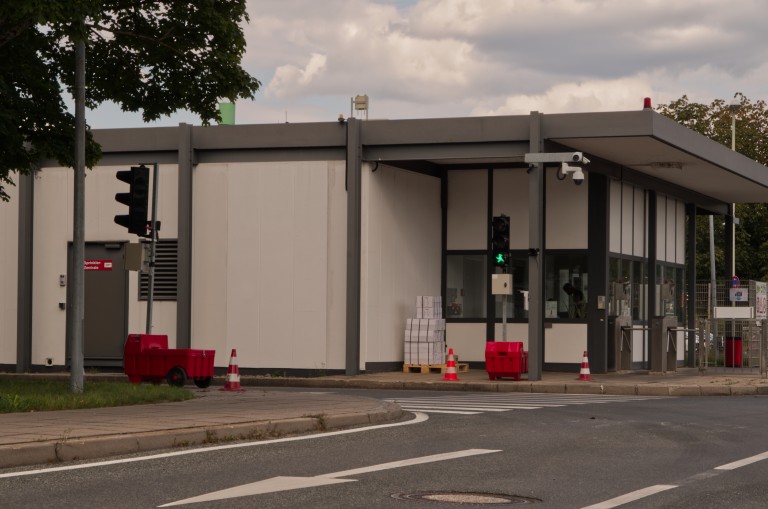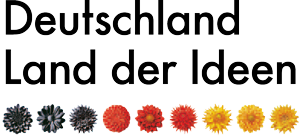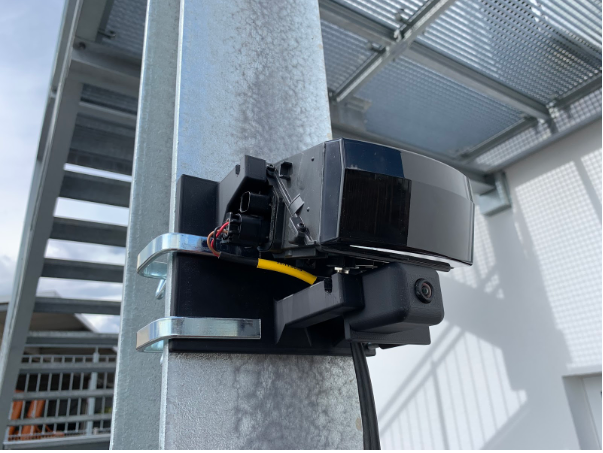With our idea for perception-based, smart traffic light phasing, we – the Valeo company – want to make a contribution to meaningful smart distancing during the corona pandemic by providing an innovative solution that can also bring added value by including further road users.
Dr. Maximilian Pöpperl, Team leader and Valeo Expert in Driving Assistance Research Germany, Valeo Germany

Smart traffic light control can help to support smart distancing and promote intelligent mobility as well as to enhance the attractiveness of certain means of transport. Sensors from the automotive sector are used here for identifying and classifying objects with the help of AI algorithms. For this purpose, the sensors are installed on traffic lights or in their immediate vicinity in order to detect whether and, if so, how many persons are waiting at a traffic light or whether a group of persons is moving towards a traffic light and a critical number of persons in the waiting area might be exceeded. In this case, the phasing of the traffic light can be modified to prevent too many persons from gathering there.
For pedestrians waiting at the traffic light, the traffic light can also be controlled in this manner without manual activation by a pedestrian. Thus, an untraceable source of infection (the button pushed every day by a large number of persons) can be eliminated. Other road users in addition to pedestrians can be given priority. Cyclists, for example, would be a good target group, as they are overlooked or ignored by most current smart traffic light systems.
Good to know
- The idea for the project emerged from reflections on smart distancing. Whereas in many spheres of public life and in shops, compliance with minimum distances and maximum numbers of persons are ensured by markings or other precautions, no such arrangements are usually in place at traffic lights. Therefore, it frequently happens that larger groups of persons gather there and then stand in close proximity to each other, thus increasing the risk of diseases spreading.
- The project was launched in March 2020 in response to the coronavirus pandemic and initiated within the framework of a Valeo expert workshop. Subsequently, the planning was developed.
- Fun fact: Everybody spends two weeks of their life waiting at red traffic lights. Quelle

Interview with Johannes Petzold, Head of Research and Innovation Department, Valeo Schalter und Sensoren GmbH
How did you come up with the idea for your project?
The idea for the project emerged from reflections on smart distancing. During the pandemic, it has been possible to observe the minimum distance and other hygiene measures in many spheres of public life and in shops. It has also been possible to control the maximum number of persons accordingly. At traffic lights, however, larger numbers of persons may gather who then stand in close proximity to each other, thus increasing the risk of spreading diseases.
What challenges did you face during implementation?
The greatest challenges in the implementation have so far consisted of adapting the vehicle-specific sensors and algorithms to this new field of application. The issue here is traffic and the recognition of objects that are also of interest to vehicles. The ambient and installation conditions, however, are different. In addition, new and challenging tasks have to be addressed such as determining the distance between the pedestrians as accurately as possible, for example.
Where do you see your project in five years?
After the conceptual phase of our project idea, Valeo will approach established manufacturers of traffic lights and local authorities. Ideally, Valeo is planning to offer interested clients a comprehensive solution for smart traffic light systems for various applications that makes a contribution to tomorrow's intelligent mobility and takes into account the topic of smart distancing, for example.



